Tabatabaei House | A Must-See Historical Landmark in Kashan
Kashan is renowned for its splendid and historic houses, constructed by prominent merchants and businessmen. Many of these remarkable houses have been well-preserved and now serve as major tourist attractions.
Among these architectural marvels, the Tabatabaei Historical House stands out as one of the most exceptional examples. Its symmetrical design and intricate decorations captivate every visitor. The Tabatabaei House, more elegant and beautiful than most, represents the epitome of Kashan's historical houses. Approximately 200 years ago, the concept of a house and its grandeur differed greatly from today, reflecting a harmonious blend of science, nature, and human craftsmanship to create a true masterpiece.
Tabatabaei House History

The Tabatabaei Historical House, a notable attraction in Kashan, dates back to the 19th century and exemplifies the opulent lifestyle of the era. Built by Seyyed Jafar Tabatabaei Natanzi, an esteemed international carpet merchant, this house was dedicated to his beloved wife. The intricate decorations and impressive architectural details make it a must-visit site. Interestingly, the numerous Sphinx designs on the walls, called "Homa" in Persian, allude to the name of Tabatabaei's wife, Homa, reflecting his deep affection for her.
Over time, the house became a significant historical landmark. The Cultural Heritage Organization eventually acquired it, and the municipality of Kashan undertook its restoration. Constructed around 1880 during the Qajar dynasty, the house stands as a symbol of the period's prosperity and cultural richness. Throughout its existence, the Tabatabaei House has witnessed various historical events and transformations, maintaining its status as a testament to the artistic and luxurious achievements of its time. Today, it functions as a living museum, drawing visitors from around the globe who are eager to explore its architectural splendor and historical significance.
Tabatabaei House Architecture
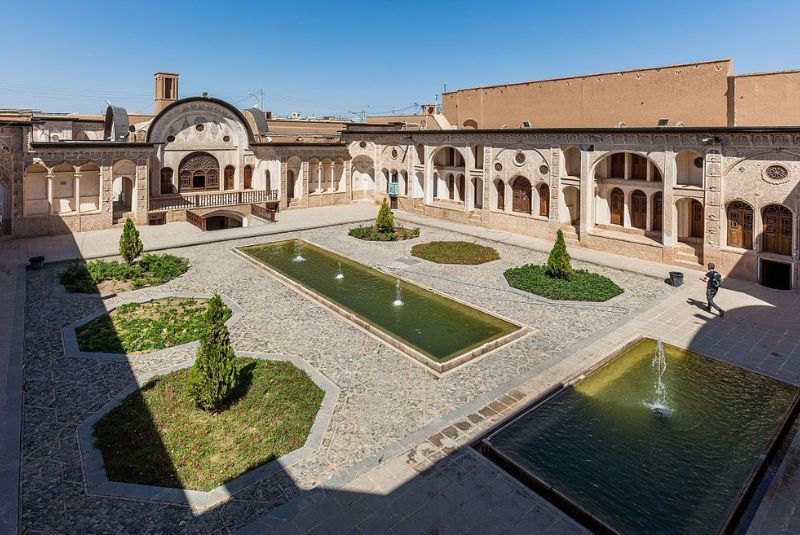
The Tabatabaei House, a stunning example of traditional Persian architecture, embodies the grandeur and elegance characteristic of the style. This 19th-century house seamlessly blends Persian, Islamic, and Western influences, resulting in a harmonious fusion of cultural aesthetics.
One of the house's most notable features is its symmetrical design centered around a serene courtyard known as "hashti." This central area is adorned with a beautiful fountain and lush gardens, creating a peaceful and inviting space that links various parts of the house. Surrounding the courtyard are rooms and hallways elaborately decorated with stucco and mirror work, referred to as "moarragh." These intricate designs showcase floral patterns, geometric motifs, and calligraphy, reflecting the Persian appreciation for art, nature, and spirituality.
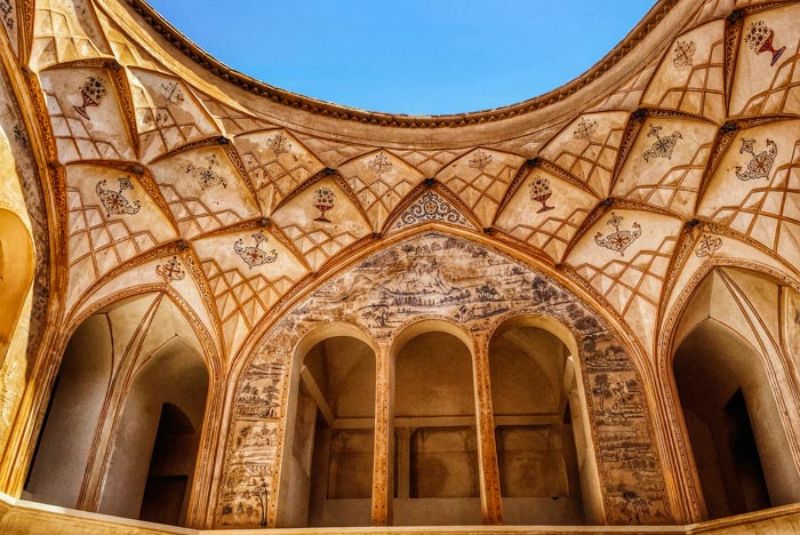
The vibrant stained glass windows, called "orosi," cast colorful patterns on the interiors when sunlight filters through, creating an enchanting and ethereal ambiance. Renowned architect Ostad Ali Maryam, who designed several architectural masterpieces in Kashan, including the Amin-ol Dowleh Caravansarai and the Boroujerdi House, also designed the Tabatabaei House. This residence is a prime example of an authentic Persian residential complex, featuring introverted house designs that separate private from public life. The house consists of two distinct areas: Andaruni, the private women's section, and Biruni, the public section accessible to guests. The construction of the Tabatabaei House took nearly a decade and encompasses four courtyards, two in Andaruni and two in Biruni. The 5,000-square-meter house includes 40 rooms, making it an extensive and impressive structure to explore.
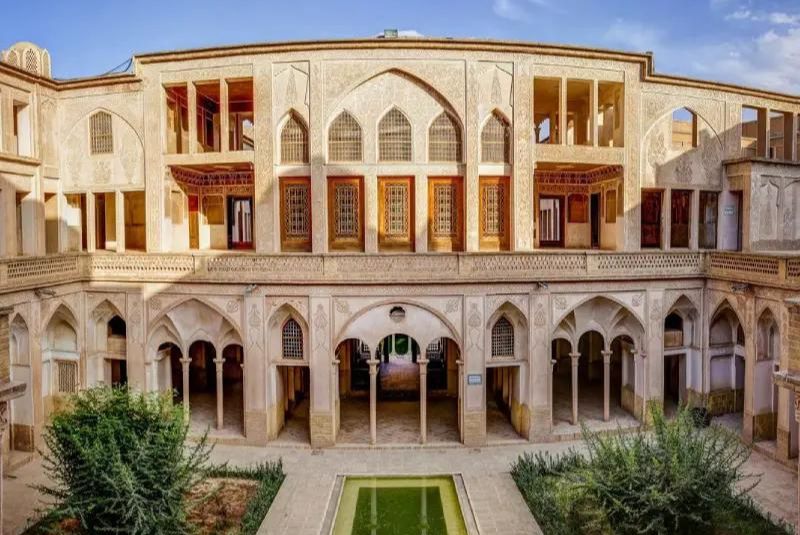
The multi-colored windows of the Tabatabaei House, reminiscent of the Nasir-ol Molk Mosque in Shiraz, make it a popular spot for photographers. Visitors are encouraged to wear colorful attire and bring their cameras to capture the vibrant hues. The walls of the house feature designs of Persian carpet elements, representing the owner's occupation as a carpet merchant. Known as the "bride of Persian houses," the walls are also adorned with flora and sky patterns, symbolizing the flow of life and changes in nature. These decorations, combined with the sounds of birds and fountains in the courtyard, transport visitors to a simpler time.
Iwan and Entrance
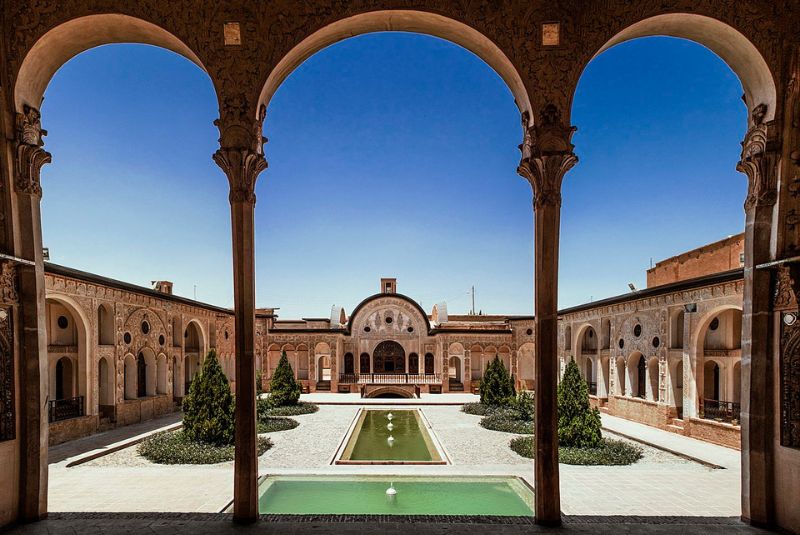
The iwan and entrance of the Tabatabaei House form a grand and captivating gateway into its architectural splendor. The iwan, a majestic arched portal, commands attention with its intricate stucco and tile work depicting geometric patterns and delicate floral motifs. Stepping through this archway, visitors are transported into an enchanting world of beauty and refinement. The entrance leads to the central courtyard, with its tranquil ambiance, lush gardens, and mesmerizing fountain, providing a delightful sense of arrival and a glimpse into the opulence and artistic brilliance within. The iwan and entrance set the tone for the architectural wonders that unfold, enhancing the experience of exploring this historic residence.
Andaruni and Biruni
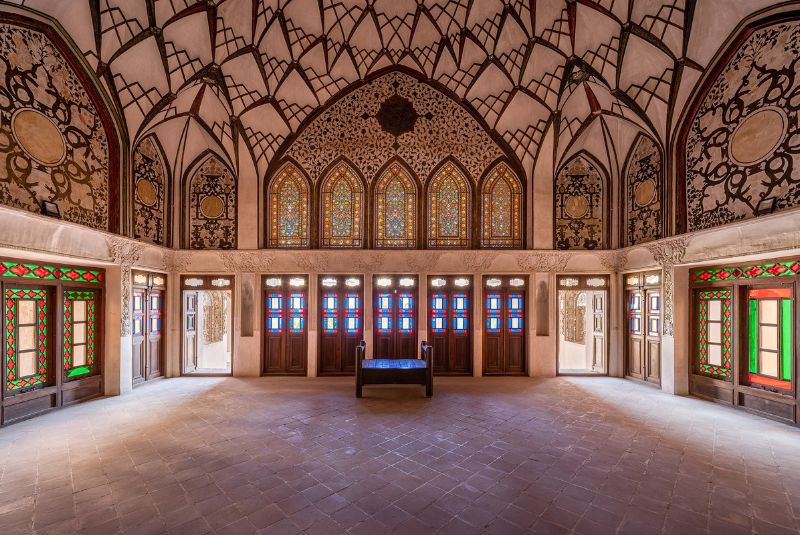
The Tabatabaei House offers a unique insight into the social dynamics of its time through its distinct Andaruni and Biruni sections. The Andaruni, or inner section, was the private domain of the Tabatabaei family, reserved for intimate gatherings and family life. Richly adorned with exquisite stucco work and elegant mirror decorations, the Andaruni exudes an air of opulence and privacy, reflecting the family’s affluent status. In contrast, the Biruni, or outer section, served as the public space where guests were welcomed, and business matters were conducted. With its stunning courtyard, central fountain, and beautifully decorated halls, the Biruni exudes a sense of grandeur and hospitality. The juxtaposition of these two sections allows visitors to experience the duality of the Tabatabaei family’s lifestyle, offering a fascinating glimpse into the intricacies of traditional Persian culture and social conventions.
Windcatchers
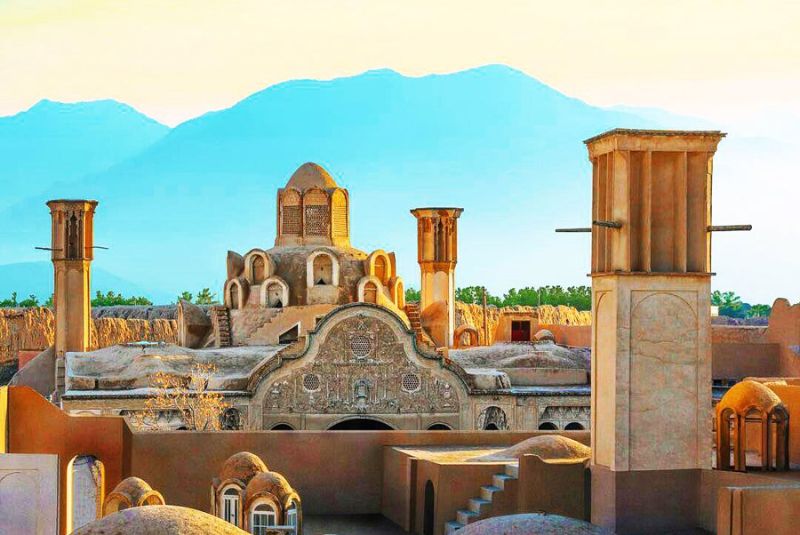
The windcatchers, or "badgir," at Tabatabaei House showcase the ingenious and environmentally conscious approach of Persian architecture. These traditional elements play a vital role in providing passive cooling and ventilation during the hot and dry summers. The windcatchers capture and direct prevailing breezes into the house, creating a natural airflow that helps maintain a comfortable and refreshing atmosphere inside. This sustainable cooling system exemplifies the resourcefulness of historical architects and serves as a testament to the harmony between human habitation and the natural environment, making the Tabatabaei House a remarkable example of adaptive and eco-friendly design.
Tabatabaei House Location and Access
The Tabatabaei House is situated in the heart of Kashan, on Alavi Street, within the city's historic district. This remarkable attraction is open to visitors daily from 8:30 AM to 6:00 PM. To fully appreciate the house's 40 rooms and intricate architecture, plan to spend approximately 1.5 to 2 hours exploring. Despite the hot climate, the interior of the house remains cool and refreshing, ensuring a comfortable visit even during the hottest weather.
The ideal time to visit Kashan is in the spring when you can enjoy the pleasant weather and also experience the Gulab Giri ceremony, a local cultural event.
Accommodation Options Nearby
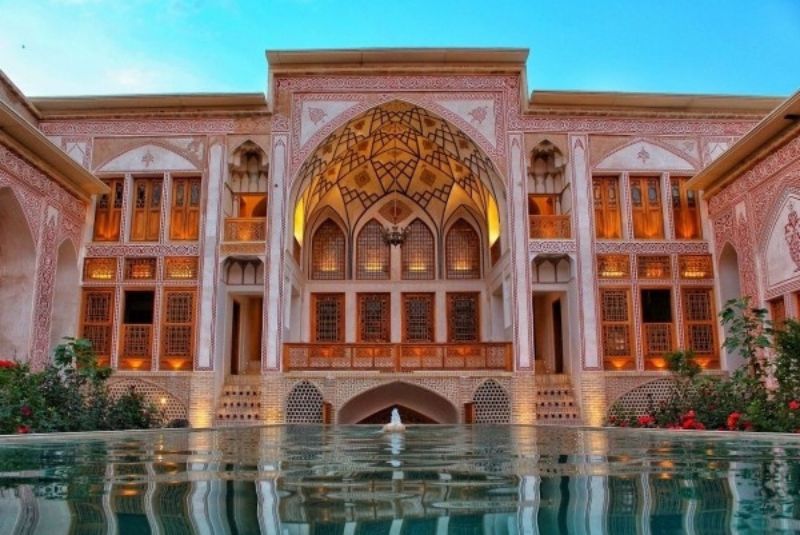
For those looking to stay nearby, there are several excellent accommodation options:
- Sana Historical Hostel
- Safa Historical Guest House
- Sarva House Hotel
- Mahinestan Raheb Hotel
- Manouchehri House
- Saraye Ameriha (Ameri Historical House)
Eatery Options
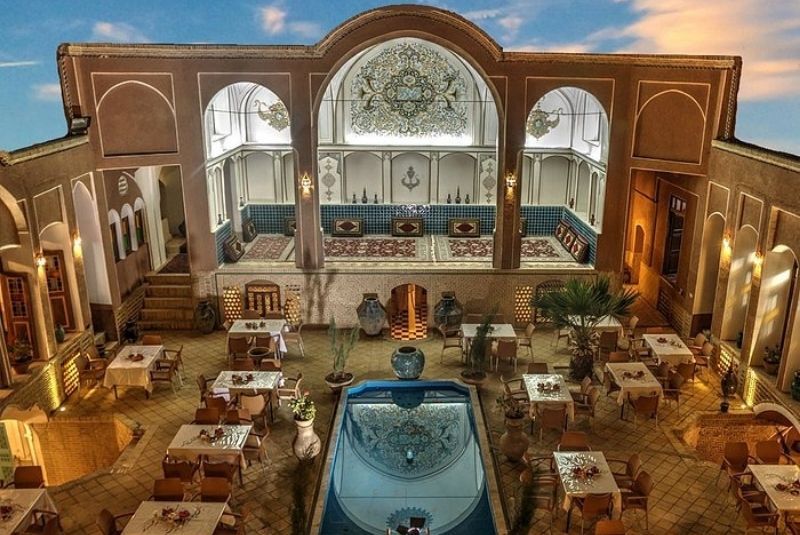
After your visit, you can relax and dine at one of the nearby eateries:
- Abbasi Coffee Shop & Restaurant
- Cafe Baam
- Mirrors Hall Restaurant
- Cafe Shazdeh
Tabatabaei House Nearby Attractions

While visiting the Tabatabaei House, you can also explore several other fascinating attractions in close proximity:
- Borujerdi House
- Abbasi House
- Ameri House
- Toy Museum
- Sultan Amir Ahmad Bathhouse
Additionally, the Agha Bozorg Mosque and the Kashan Bazaar are just a 20-minute walk away, providing more opportunities to immerse yourself in the rich cultural heritage of Kashan. The mosque is noted for its stunning architecture and serene atmosphere, while the bazaar offers a vibrant shopping experience with a variety of goods and local crafts.
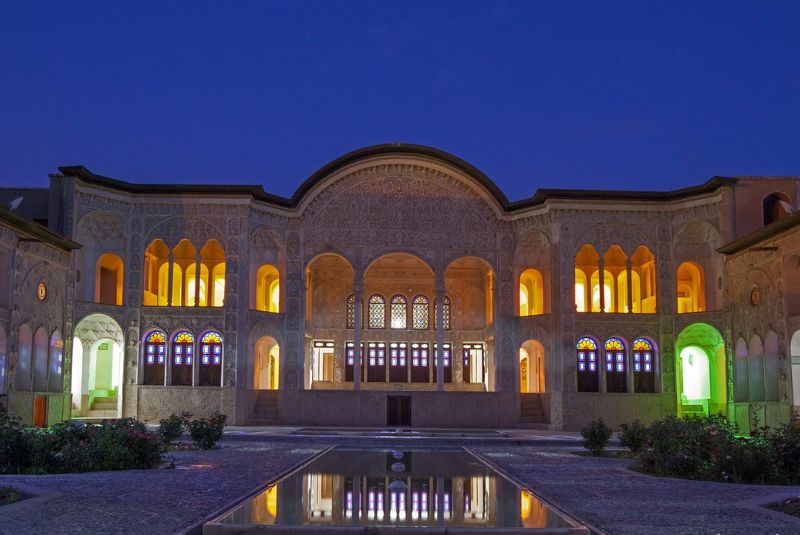
Final Takeway
Kashan, known for its stunning buildings and unique historical houses, is a captivating destination that draws numerous tourists each year. If you're planning a trip to Kashan to experience its many beauties, make sure to include a visit to the Tabatabaei House. This exquisite example of traditional Persian architecture is not to be missed.
Share your story!
Comment below and let us know about your Experience.
Your story inspires others!


Comment
Leave a Comment